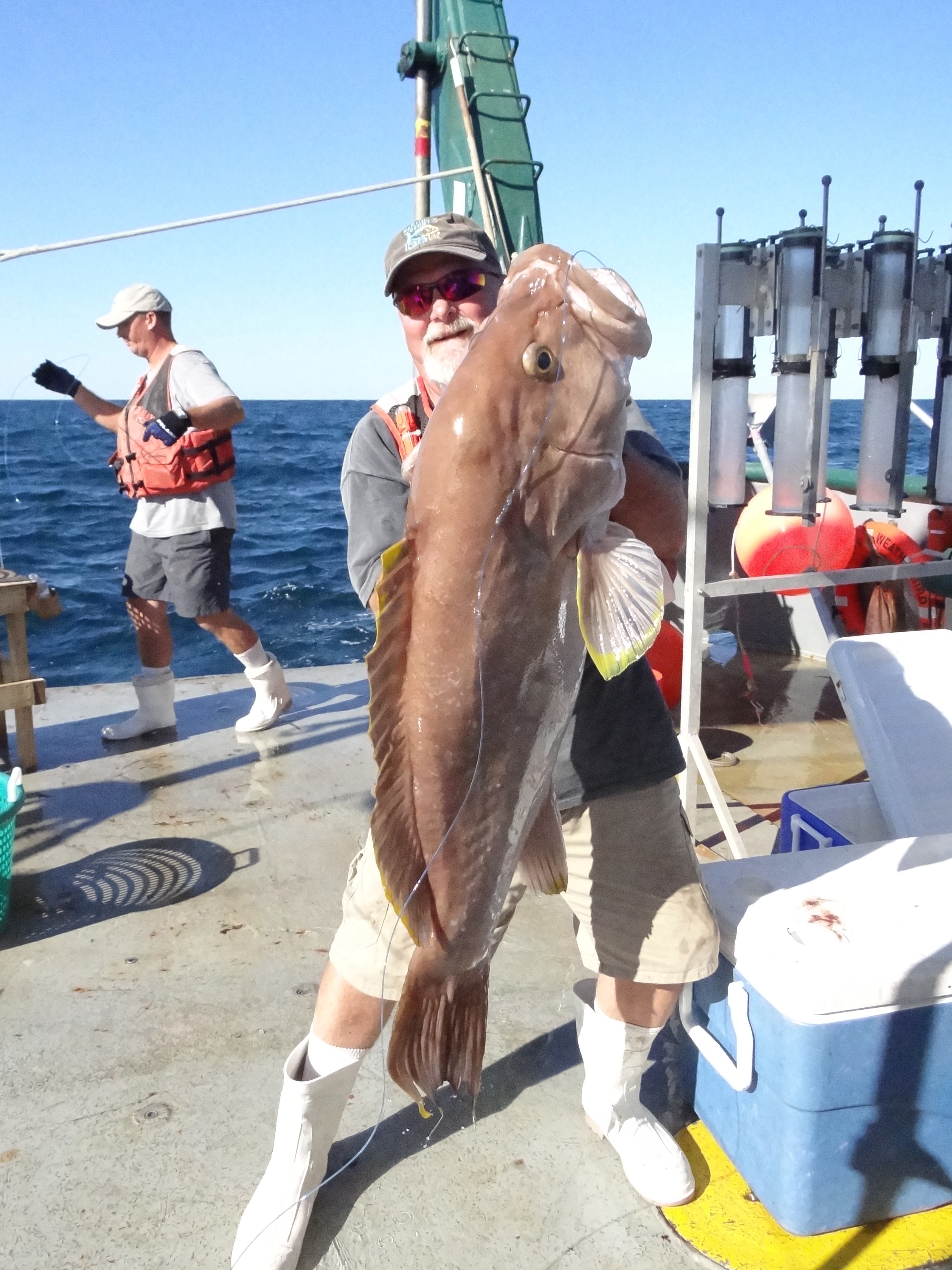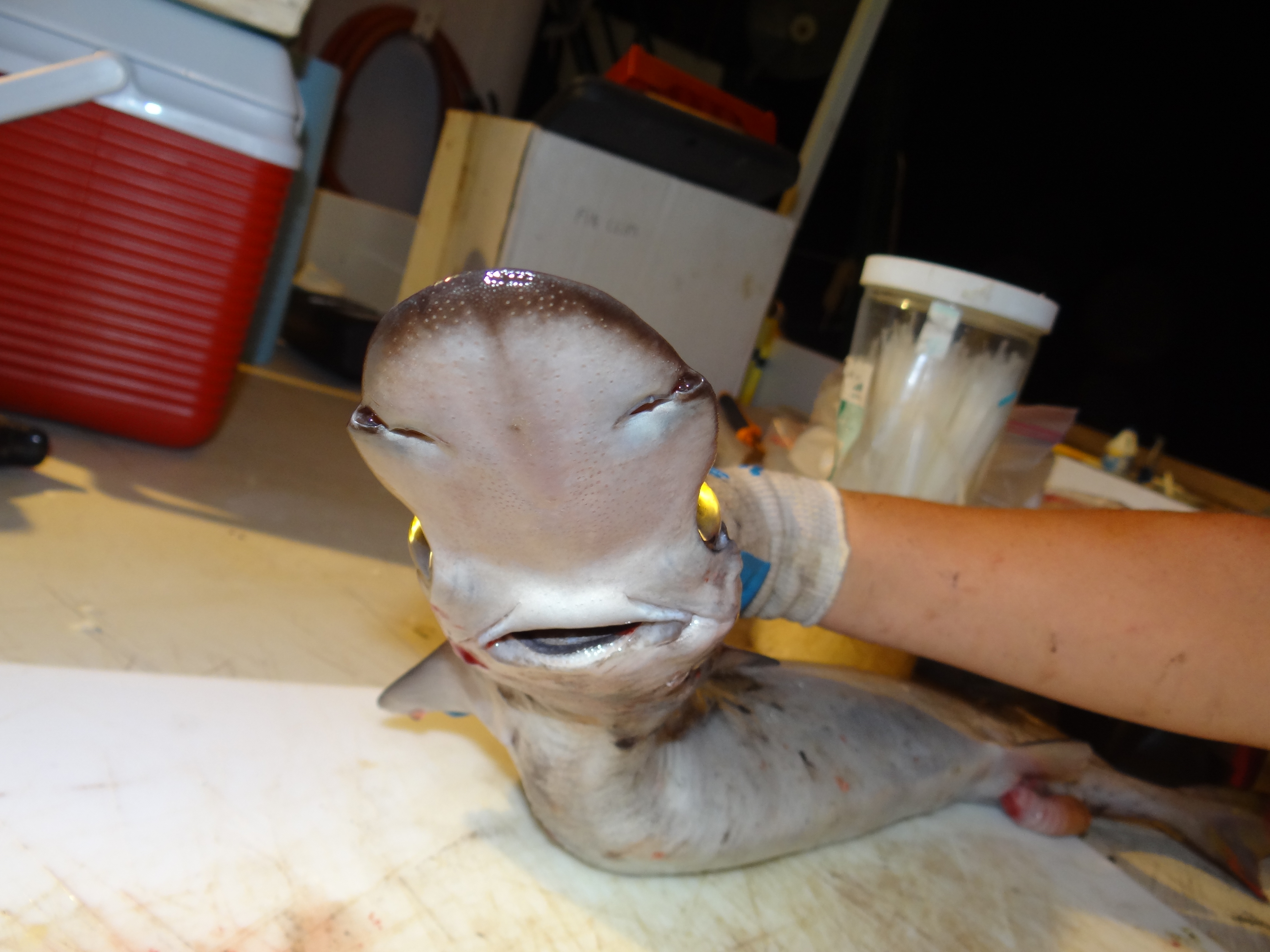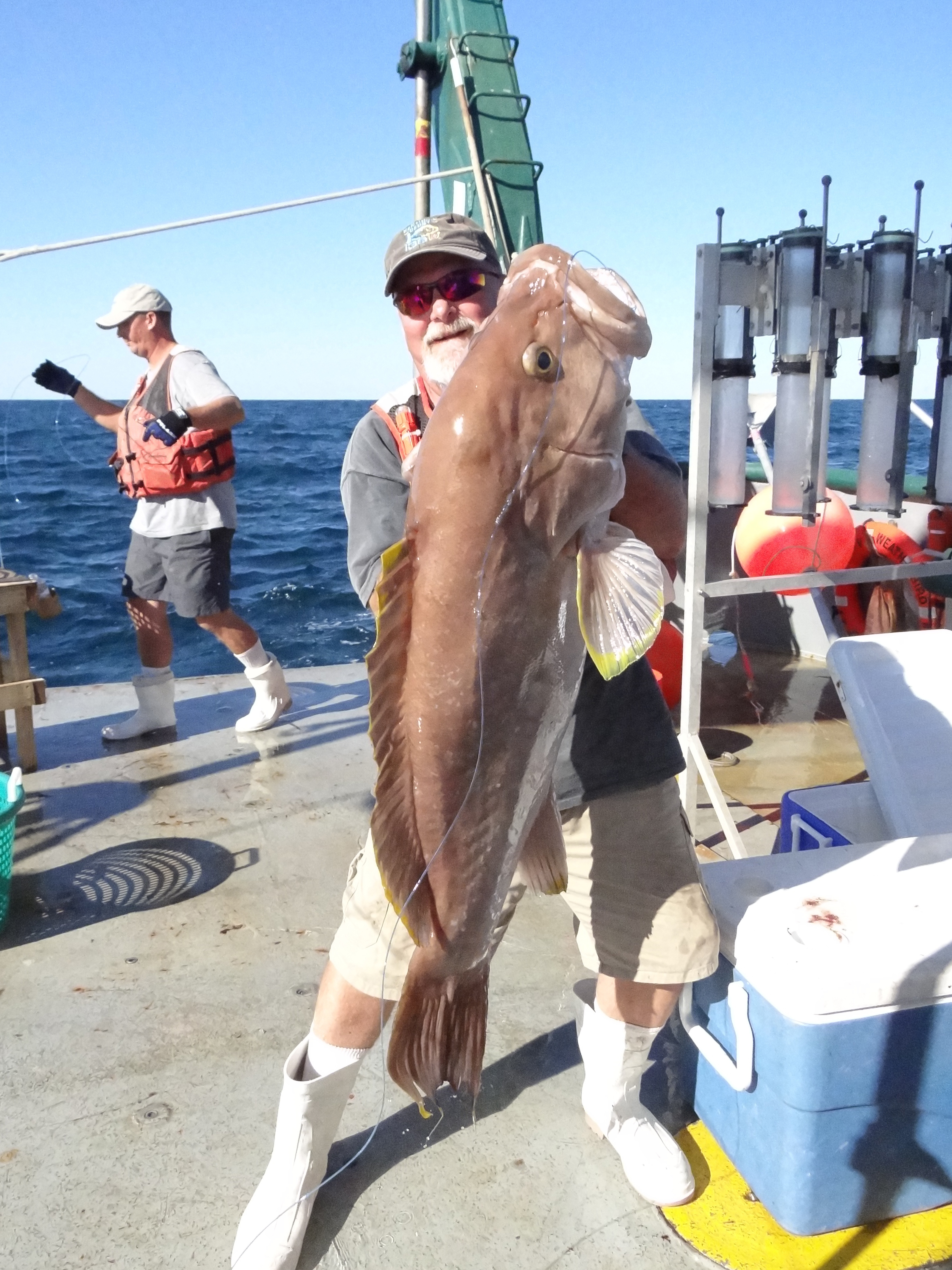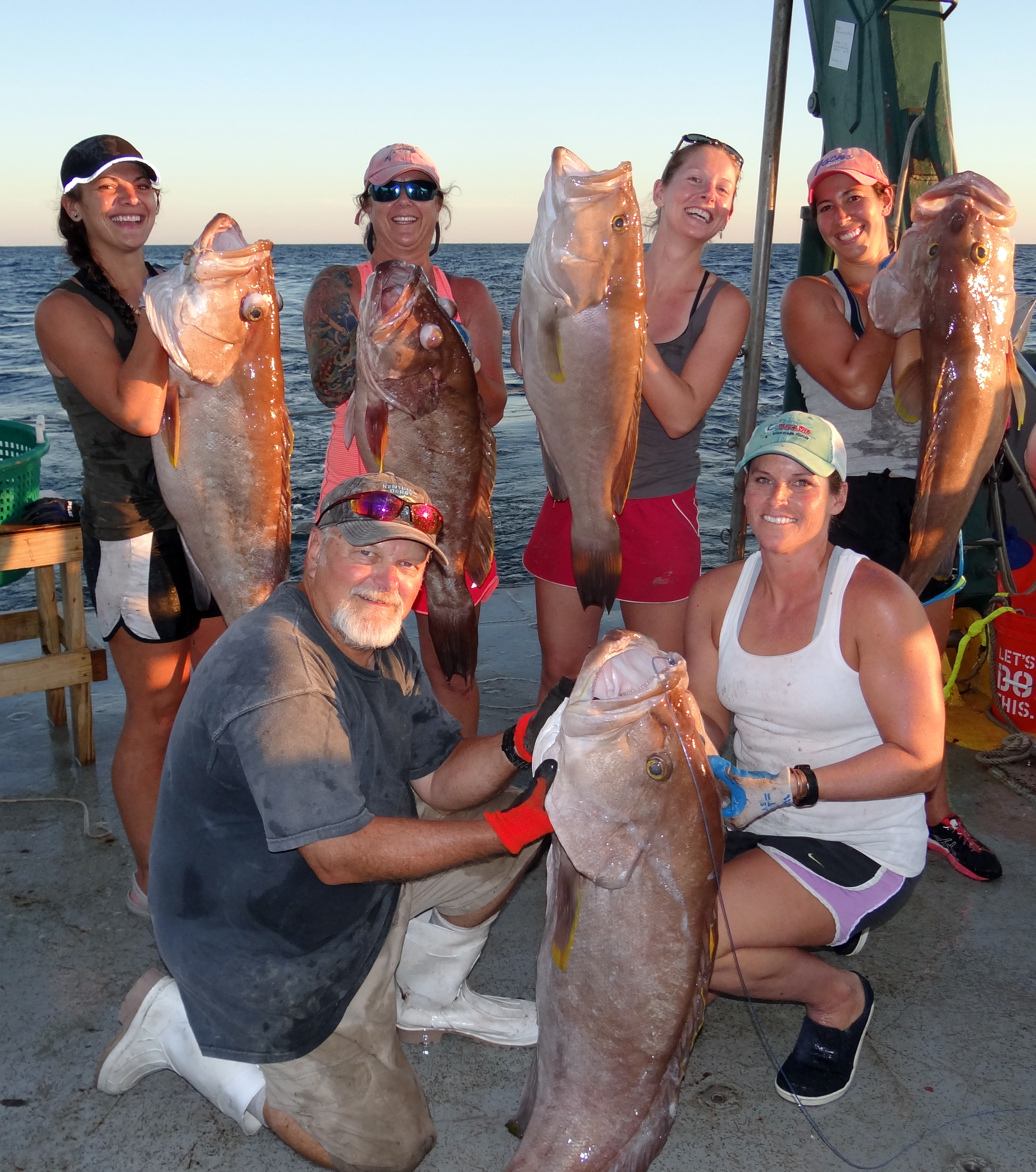
Oil Spill Research Cruise fishes up rare shark and 24.7kg grouper
When a crew of oil spill researchers embarked on a 15-day expedition into the northern Gulf of Mexico, a routine voyage to study impacts of the Deepwater Horizon oil spill was expected. These cruise exceeded topped these expectations with findings of a rare Arrowhead Dogfish and a record-sized Yellowedge Grouper.
Researchers from the Center for Integrated Modeling and Analysis of Gulf Ecosystems (C-IMAGE) collected these rare finds during their annual ‘Mud & Blood’ Expedition studying the gradual recovery of the benthic ecosystem and fishes following the Deepwater Horizon oil spill.
C-IMAGE scientists and students are interested in several “target species” including Red Snapper, Golden Tilefish, King Snake Eels, Groupers, and pelagics (Tuna or Amberjack). Samples of blood, tissue and bile are collected from each species caught to study impacts and recovery of fishes post-Deepwater Horizon.
“The questions we ask not only contribute to issues seen in Deepwater Horizon, but what we anticipate to repeat in future oil blowouts,” said Dr. Steve Murawski, Chief Principal Investigator of C-IMAGE and University of South Florida-College of Marine Science Professor. “As much as we love finding the fish we’re looking for (Red Snapper, Golden Tilefish, etc.), these rare finds send a unique energy through the ship,” Murawski continued.
Wednesday, August 26th was one of these unique days.
Long-line fishing began early in the morning as it did the previous ten days. One of the first fish up was a shark with features unlike anything they had seen on previous cruises.
 “We were fishing in deeper waters, about 200m (660ft), and pulled up the rare, Arrowhead Dogfish, a species that has only been reported 3 or 4 times with very little known in regards to its habitat and biology,” said Dr. Erin Pulster, ecotoxicology scientist with C-IMAGE. Pulster studies the impacts of oil and its metabolites on fish from levels measured in their tissues and bile. The 2015 Mud & Blood expedition was her fifth expedition into the northern Gulf.
“We were fishing in deeper waters, about 200m (660ft), and pulled up the rare, Arrowhead Dogfish, a species that has only been reported 3 or 4 times with very little known in regards to its habitat and biology,” said Dr. Erin Pulster, ecotoxicology scientist with C-IMAGE. Pulster studies the impacts of oil and its metabolites on fish from levels measured in their tissues and bile. The 2015 Mud & Blood expedition was her fifth expedition into the northern Gulf.
“We bring up a lot of sharks while fishing, including Little Gulper Sharks, which are small, stout sharks (≤100cm) with colorations, fin locations and snout shape distinct from similar species and other sharks,” said Pulster.
According to Jose Castro’s book The Sharks of North America, only three specimens of the Arrowhead Dogfish (Deania profundorum) have been seen in the Gulf mostly off the Mississippi coast. The species have a depth range of 275-1,785m (900-5,900ft).
Following the catch of the rare Arrowhead Dogfish, and at the same sampling site, more excitement came aboard in the form of a record sized Yellowedge Grouper.
Among the King Snake Eels and Little Gulper Sharks was the 127cm (4 ft 2in), 24.7kg (54.5lbs) female Yellowedge which tops the International Game Fish Association record of 22.03 kg (48.6lbs).

Several other large Yellowedge Grouper were caught that Wednesday. “They kept getting larger, 10 kg, 11kg, 14kg. But as soon as we saw this one, we knew she was the big one,” said Murawski.
Recently, a C-IMAGE fishing expedition in the southern Gulf of Mexico, following Mud & Blood, reports catching two additional Arrowhead Dogfish along the deep slopes of the Campeche Bank.
The ‘Mud & Blood’ Expeditions began following the Deepwater Horizon oil spill in 2010; researchers aboard the R/V Weatherbird II initially assessed the impact of oil and dispersant on sediments, fishes, and water quality. These Mud & Blood studies have continued for six consecutive years since the spill, sampling the same sites and studying the same target species. Results have led to publications regarding the impacts of oil on demersal fish, and oiled-sediments in the deep ocean as part of the C-IMAGE project.
The main goal of C-IMAGE is to advance understanding of the processes, mechanisms, and environmental consequences of marine oil blowouts. C-IMAGE operates from the University of South Florida-College of Marine Science with 19 other consortia members collaborating in oil spill research.
C-IMAGE is a member of the Gulf of Mexico Research Initiative (GoMRI) which funds fifteen other research consortia studying oil spill impacts in the Gulf of Mexico. Funding is made possible by a grant from BP/The Gulf of Mexico Research Initiative. Contract #SA 12-10/GoMRI-007.



